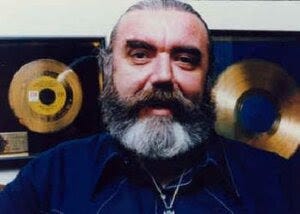Tom Donahue’s Sideline As a Record Producer

The pioneer of progressive rock on the radio was also a producer in sixties San Francisco, during his Top 40 days.
by Rich Watson
Tom Donahue, the San Francisco deejay who created a revolution in rock and roll radio through the progressive, or freeform, format, also helped develop the local music scene during the sixties as a record producer.
The bands he signed paved the way for the musical explosion in the Bay Area during the Summer of Love and beyond.
When Tom Donahue was a Top 40 DJ
The man they called “Big Daddy” was born Thomas Coman in Indiana. His radio career began in Virginia in the late forties, then to Philadelphia and WIBG, playing top 40. When the fifties payola scandals claimed him, he briefly moved to Maryland before heading west to San Francisco, in 1961.
At KYA, Donahue’s former WIBG program director, Les Crane, hired him and another WIBG alumnus, Bobby Mitchell. Known as “The Boss of the Bay,” KYA was a success, playing top 40 rock. The station is now KSFB, but an online edition exists.
In 1963, Donahue and Mitchell went into business for themselves. They promoted concerts at the Cow Palace and Candlestick Park.
A Cow Palace concert was the basis for a debut album under their new label, Autumn Records.
The San Francisco sound during the sixties
San Francisco was ground zero for the counter-culture movement of the sixties. Music played a central role.
Bands from later in the decade, including Jefferson Airplane, Big Brother and the Holding Company, Santana, Moby Grape, and the Grateful Dead took the British Invasion music and ran with it in a different direction.
Influences included:
Chicago blues (both black Southern artists and contemporary groups like the Paul Butterfield Blues Band),
jazz,
folk,
the Beatles’ Rubber Soul album, and
One of the members of Autumn Records went on to contribute to the San Francisco sound in a major way: producer Sylvester Stewart, a.k.a. Sly Stone.
Sly Stone before the Family Stone
Stone, born in Texas but raised in Vallejo, California, grew up in a religious family. He and his three siblings sung gospel music. In 1952 they recorded a 78 single. Stone learned the guitar, bass and drums by the age of seven and played in high school bands.
He was a 19-year-old deejay when Donahue met him, working at KSOL. He developed a wide variety of musical tastes, but at KSOL he played soul, plus the occasional Beatles and Stones tunes.
As a musician he played keyboard for white and black singers. He had a band of his own, called Sly and the Stoners. In 1966 his band joined forces with his brother Freddie’s band Freddie and the Stone Souls.
As Sly and the Family Stone, they went on to local and national fame.
Autumn Records’ bands
Autumn only lasted a few years, but the acts they signed did moderately well. Among the notable ones:
Bobby Freeman had a top ten hit in 1958 with “Do You Want to Dance.” With Autumn, he had another top ten hit with “C’mon and Swim,” written by Donahue and Stone, under their real names.
The Beau Brummels released their first two albums at Autumn, Introducing the Beau Brummels and The Beau Brummels Vol. 2. Among their hits included “Laugh, Laugh,” produced by Stone. It was such a big hit it appeared on The Flintstones.
Grace Slick’s pre-Jefferson Airplane band, The Great Society, recorded a 45 of “Someone to Love” under the Autumn subsidiary North Beach. It, too, was produced by Stone. He made forty-five takes of the song before going with the final version.
In addition, the Grateful Dead, when they were called the Emergency Crew, almost signed with Autumn in 1966. By that point, though, the label had run out of money. Warner Bros. bought them out.
Here’s a full list of Autumn recordings.
Donahue trashes Top 40 radio
Also in 1966, Donahue opened a psychedelic nightclub called Mothers. He continued promoting shows, including the last Beatles concert, at Candlestick Park.
Until rival station KFRC, with its more powerful AM signal, defeated them in the ratings, KYA was the dominant Top 40 station in the Bay Area.
Bill Drake, KYA’s program director in 1961-62, refined the Top 40 format, created during the fifties as a means to combat television. With partner Gene Chenault, they crafted what they called “Boss Radio.” This format spread to other California stations, national stations, and others in Canada and even England.
As a deejay, Donahue had grown dissatisfied with Top 40 radio, perhaps in part due to his work with Autumn Records. He craved more than playing the same hit singles over and over. In 1967, he wrote an article in Rolling Stone condemning Top 40 and AM radio in general.
It was the first step towards him leaving KYA and finding freedom in what would become progressive radio.
But that is another story.
@byrichwatson
———————
Do you remember the music from Autumn Records?

